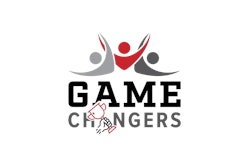Forget the one-hour-a-day recommendation. A study by University of Alberta medical researchers suggests that seven minutes of exercise is the key to keeping kids healthy, as long as it's the right kind of exercise.
"Our research showed children don't need a lot of intense physical activity to get the health benefits of exercise - seven minutes or more of vigorous physical activity was all that was required," says co-principal investigator Richard Lewanczuk, a researcher with the Faculty of Medicine & Dentistry at the University of Alberta. "But the seven minutes had to be intense to prevent weight gain, obesity and its adverse health consequences. And most kids weren't getting that."
As part of the study, Lewanczuk and his team collected data from more than 600 children between the ages of nine and 17 wearing monitors for seven days, as well as reviewed data from the Black Gold Regional Schools' Healthy Hearts program. The research team calculated that participants were sedentary nearly 70 percent of the time, engaged in light physical activity 23 percent, moderate physical activity less than seven percent, and spent less than one percent of their time engaged in vigorous activity.
The data showed that the amount of light or moderate activity had little effect on health, even when time spent engaged in such activities increased. Children who engaged in seven minutes or more of intense activity were found to have significantly better health, regardless of the quantity of light or moderate activity.
"This research tells us that a brisk walk isn't good enough," says Lewanczuk. "Kids have to get out and do a high-intensity activity in addition to maintaining a background of mild to moderate activity. There's a strong correlation between obesity, fitness and activity. Activity and fitness is linked to a reduction in obesity and good health outcomes."
Previous research by the same group has found that activity levels in children are significantly higher on weekdays than weekends, highlighting the importance of physical activity in schools. Lewanczuk hopes the latest findings can provide guidance for planning physical activities.





































